On View: October 27 – December 10, 2021
Lauren Kalman is a visual artist based in Detroit, whose practice is rooted in contemporary craft, sculpture, video, photography and performance. Her work investigates constructions of the ideal, the politics of craft, and the built environment through performances using her body.
Raised in the Midwest, Kalman completed her MFA in Art and Technology from the Ohio State University and earned a BFA with a focus in Metals from Massachusetts College of Art.
Her work has been featured in exhibitions at the Renwick Gallery at the Smithsonian Museum of American Art, Museum of Arts and Design, Museum of Contemporary Craft, Cranbrook Art Museum, Contemporary Art Museum Houston, Museum of Fine Arts Boston, Mint Museum, World Art Museum in Beijing, and the Musée d’Art Moderne de la Ville de Paris among others. Her work is in the permanent collection of the Françoise van den Bosch Foundation at the Stedelijk Museum Amsterdam, Museum of Fine Arts Boston, Smithsonian Museum of American Art, Detroit Institute of Art, Museum of Arts and Design, and the Korean Ceramics Foundation.
Artist Statement
In But if the Crime is Beautiful… Kalman uses assertive performances of the female body with decorative elements like metal, beading, and garments, combined with iconic Modernist Furniture. But if the Crime is Beautiful… responds to the legacy of the architect Adolf Loos’ 1910 lecture Ornament and Crime. In Ornament and Crime, Loos proposes that ornament is regressive and primitive, and that in his contemporary society, only degenerates and criminals are decorated. Women’s dress was included in this critique. Loos’ writings influenced principals of the Modernist movement, a lineage that still has great impact on art and design today. Kalman’s work uses jewelry, craft mediums, and decorative objects as a strategic choice; and in contrast, also uses whiteness and simplicity and a calculated choice. Sterile objects and empty space in the work reference the link between minimalism, masculinism, and ideas of intellectual purity. These links were codified aesthetically throughout the Modernist period.
Craft in recent thinking, has been conceptualized as a medium that has remained vital outside of the contemporary art world. The legacy of modernism, minimalism, and the high arts (sculpture and painting) have historically privileged the cerebral over the corporeal. Crafts, in contrast, have long been associated with the domestic, collective, and the female. In this work the female body and decoration are inserted into and upon iconic Modern furniture objects.
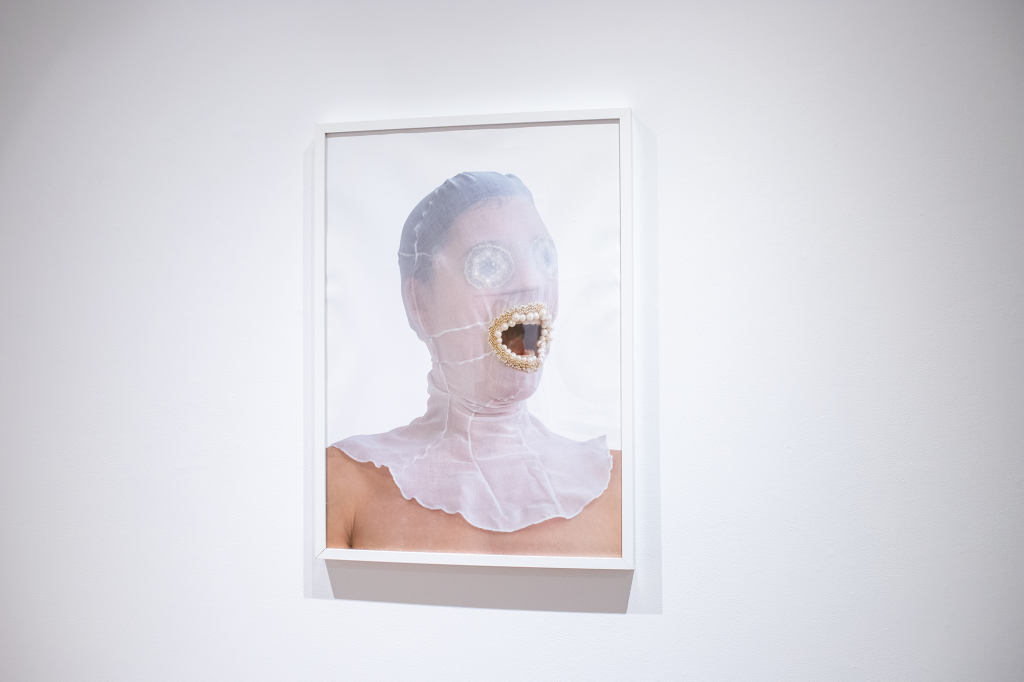
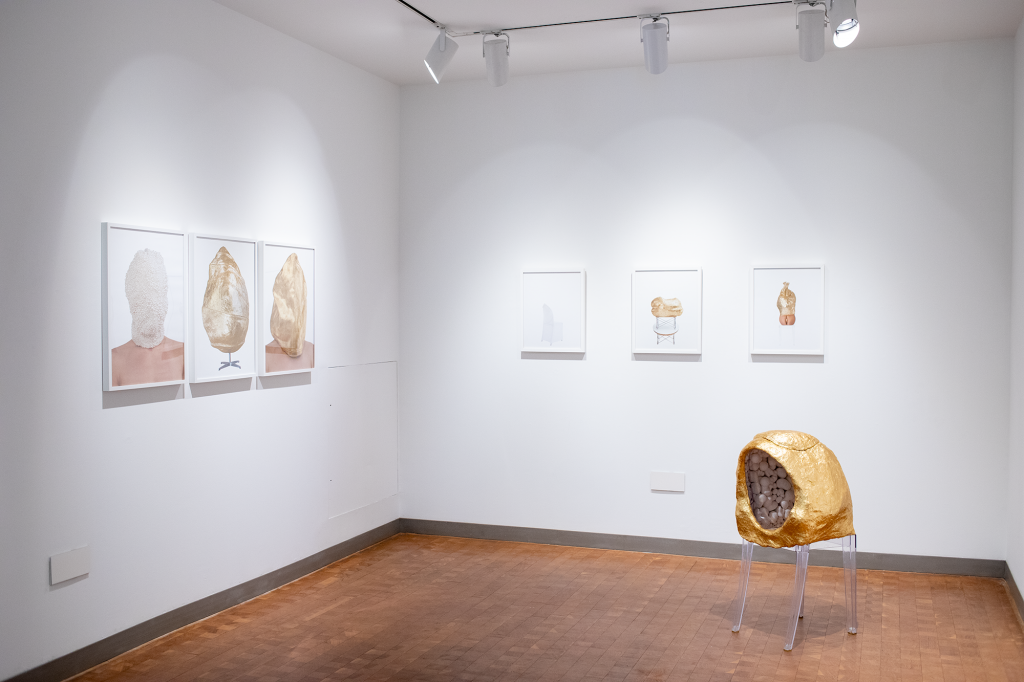
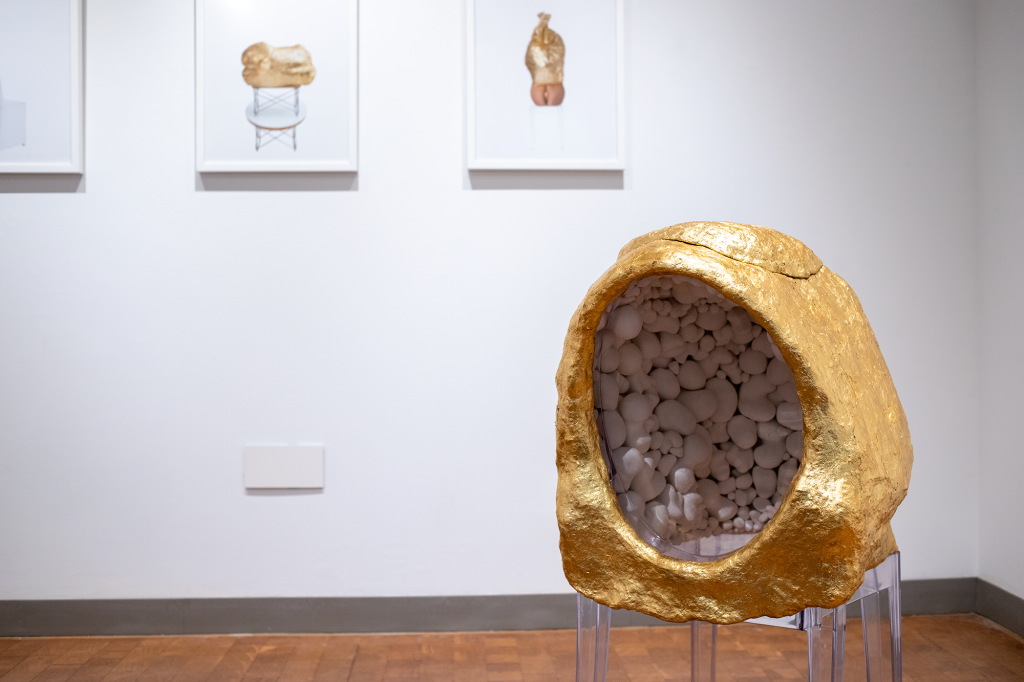
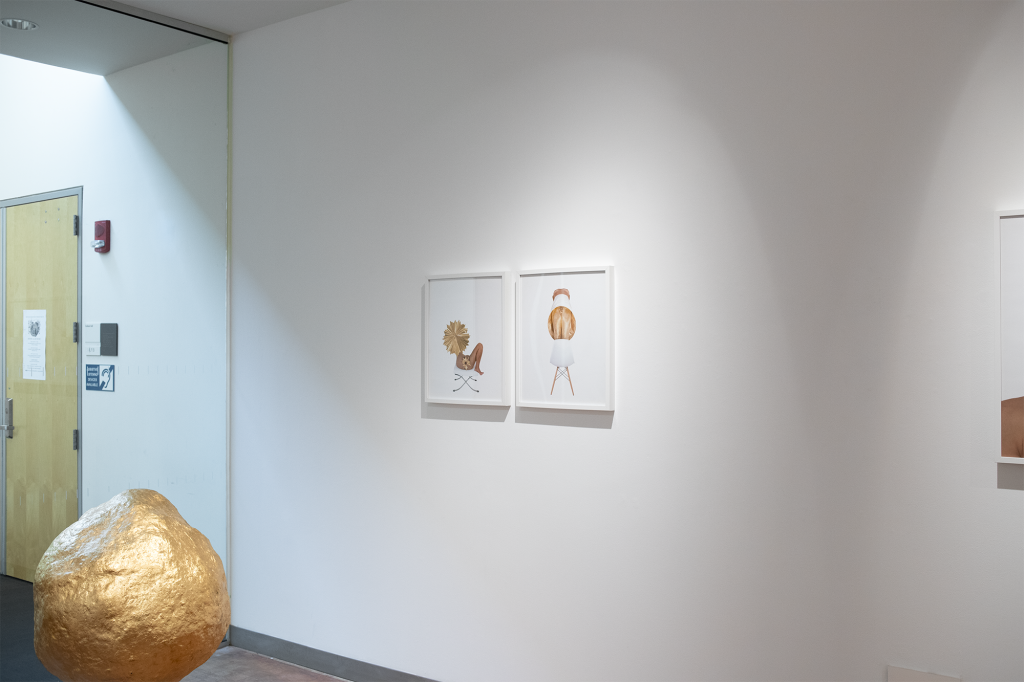
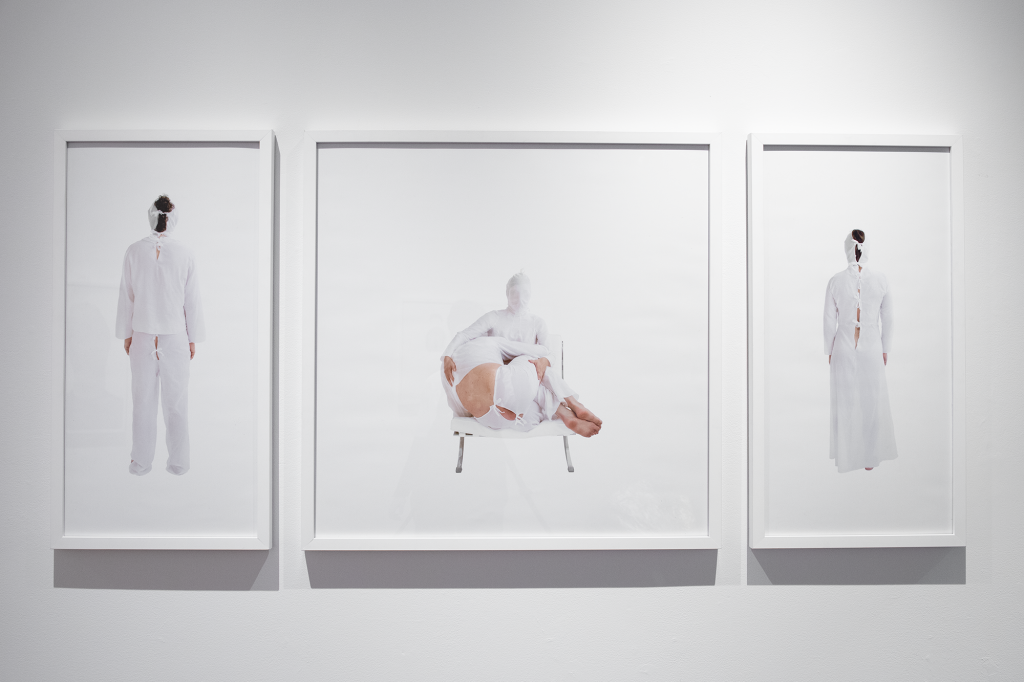
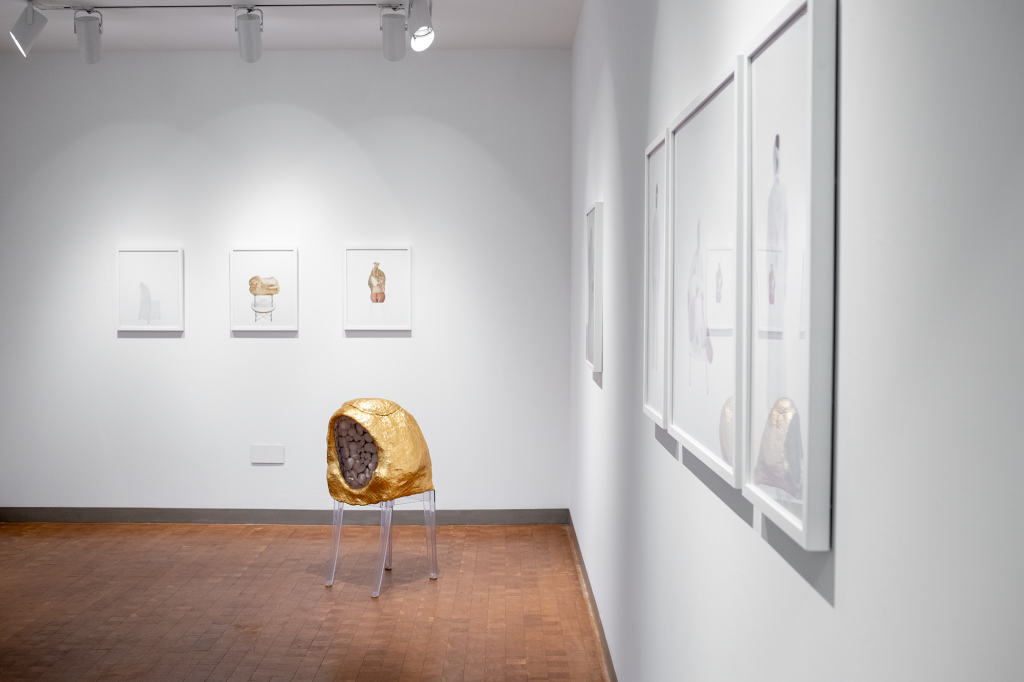
You must be logged in to post a comment.